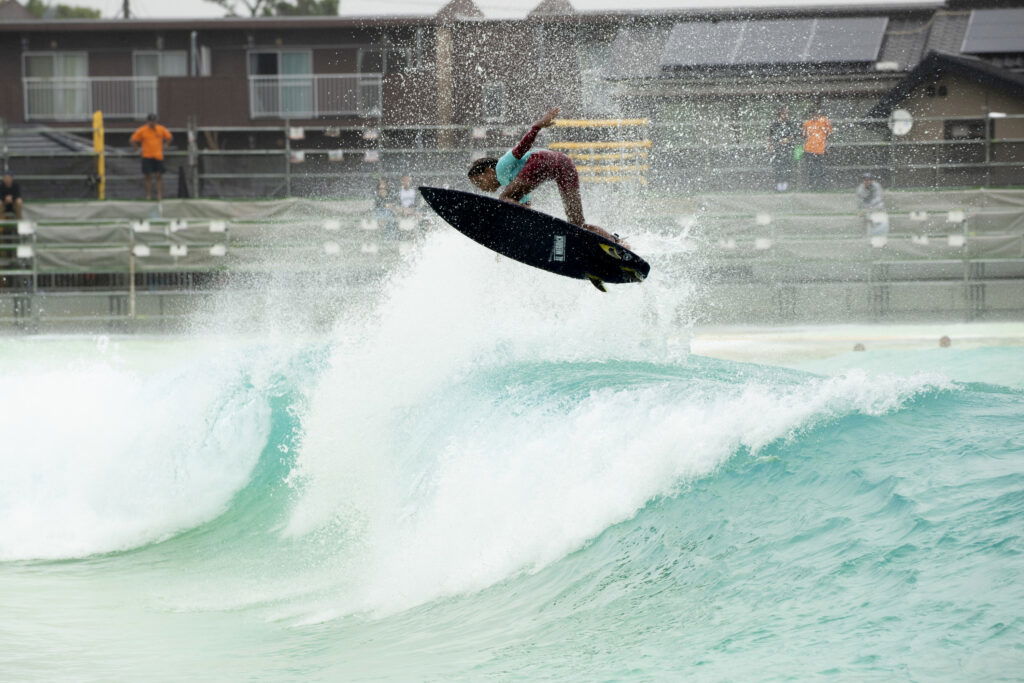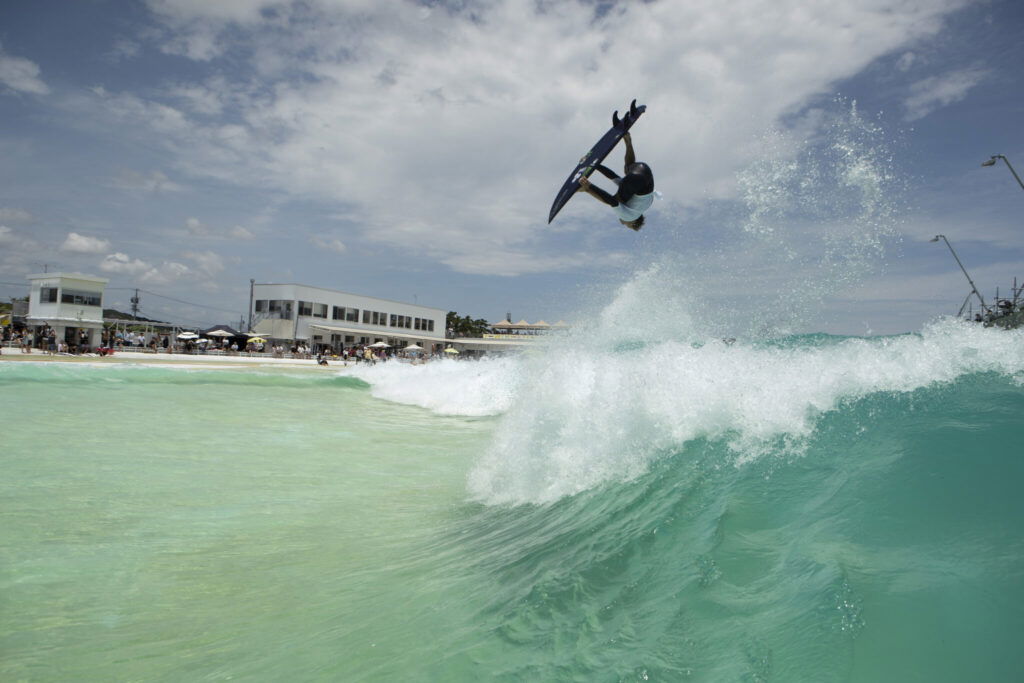All Three Stab High Japan Winners Were Riding The Same Surfboard Brand
And two of them were on a technology you’ve never heard of.
69% of Stab High Japan surfers were riding some form of EPS or Carbon construction.
100% of the prize money recipients, including Monster Air winner Mason Ho, were on EPS or Carbon.
As you might have deduced from the header image, all three of our division winners — Eithan Osborne, Lucas Cassity, and Kiara Goold — currently ride for Channel Islands surfboards.
“I was riding the SpineTek Neckbeard,” Eithan Osborne told me, over poor connection from the Padang airport. “That’s all I’ve ridden in every Stab High. I’ve always liked it for airs. It’s a wide, fast board and the middle is pretty wide, so it’s a good place to land on.”

“I remember watching Dane always doing airs on them, and when I got on CI, that was the first board I wanted to get. For the pool, I love the Spine-Tek. I get so much more pop from it. I tried the new Dumpster Diver, but I don’t know, the Neckbeard feels more solid in the wave for me and not too much moving around, if that makes sense. It still felt stable, but light enough where I could just pop it and do whatever.”
“I personally don’t ride many epoxies in the ocean. In the ocean, maybe it’s just me, I feel like I’m floating too much on top of the wave, whereas in the pool it’s probably less dense than the ocean water, so you kind of sink in a little more.”
As for Lucas and Kiara, they brought home their earnings atop a fiberglass composition you likely haven’t heard of — Eco Carbon Tech (ECT).

“What we’ve done here, is we’ve taken recycled carbon-fiber, pulverized it into a powder, and then we mix it into resin,” says Britt Merrick. “Then we do a normal wet-lam construction with it. It feels more like your normal surfboard, and it can be PU or EPS. Part of the issue with carbon wraps and layups is that they create a really, really stiff surfboard. It’s a bit of a foreign feeling, it’s got its place for sure, but it’s not a broad place.”
The idea is that you get the liveliness and sturdiness of a carbon board, without the stiffness or the price tag.
“In my mind, carbon boards are too strong,” follows Britt. “Surfboards should dent a bit, you should get a bit of a footwell. When a board does dent, it somewhat denotes the flex characteristics of that board. Flex is one of the most important things in a surfboard.”
Bottle Rockets winner Lucas Cassity says the boards he was riding in the event were his first batch of ECTs. He hasn’t ridden anything else — in the ocean or the pool — since.
“When I first rode ’em, they were super responsive, way more than the PU boards,” he says. “It felt like I would go faster, that’s why I started riding them because I wanted a little more speed.
“I ride them in the ocean every day now. I got addicted to ’em, they’re just so responsive. I don’t know, I’m not very informed about what the material does or what it’s supposed to do, but I can tell it makes a big difference in speed, especially when the waves are weaker.”
Luke Swanson, who contended for Monster Air with one of his trademark backflips, gives a slightly more nuanced perspective.
“I think on a spectrum, I’d put the ECT on the more responsive, sensitive side of things. I get more flex, whippiness and responsiveness. Whereas the SpineTek feels a little more strong and elastic, a little more stable. Usually, I choose ECT if the waves are asking for a little more effort and manufactured energy from me. It has that level of pop beyond SpineTek.”

While no one from Stab has tested this new construction (yet), the CI team feels confident that they’ve found something special here. Considering their results at Stab High, we figured it was worth sharing the news of this new tech with our audience. We’ll let you know once we get hands feet on it.














Comments
Comments are a Stab Premium feature. Gotta join to talk shop.
Already a member? Sign In
Want to join? Sign Up